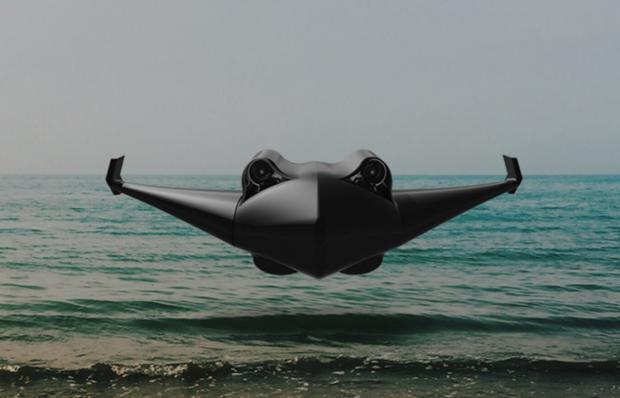
Breaking News
 Jimmy Dore Compares Trump's Endorsement of Overthrowing Libya to His Actions in Venezuela
Jimmy Dore Compares Trump's Endorsement of Overthrowing Libya to His Actions in Venezuela
 Pfizer mRNA Found in Over 88% of Human Placentas, Sperm, and Blood -- and in 50% of Unvaccinated...
Pfizer mRNA Found in Over 88% of Human Placentas, Sperm, and Blood -- and in 50% of Unvaccinated...
 "All real footage, no CGI, no AI, no video speed-up." Looks fake to me – their robot…
"All real footage, no CGI, no AI, no video speed-up." Looks fake to me – their robot…
 This Immigrant Admitted Their Plan for White PeopIe in America And It's Far Worse Than Most Thou
This Immigrant Admitted Their Plan for White PeopIe in America And It's Far Worse Than Most Thou
Top Tech News
 Build a Greenhouse HEATER that Lasts 10-15 DAYS!
Build a Greenhouse HEATER that Lasts 10-15 DAYS!
 Look at the genius idea he came up with using this tank that nobody wanted
Look at the genius idea he came up with using this tank that nobody wanted
 Latest Comet 3I Atlas Anomolies Like the Impossible 600,000 Mile Long Sunward Tail
Latest Comet 3I Atlas Anomolies Like the Impossible 600,000 Mile Long Sunward Tail
 Tesla Just Opened Its Biggest Supercharger Station Ever--And It's Powered By Solar And Batteries
Tesla Just Opened Its Biggest Supercharger Station Ever--And It's Powered By Solar And Batteries
 Your body already knows how to regrow limbs. We just haven't figured out how to turn it on yet.
Your body already knows how to regrow limbs. We just haven't figured out how to turn it on yet.
 We've wiretapped the gut-brain hotline to decode signals driving disease
We've wiretapped the gut-brain hotline to decode signals driving disease
 3D-printable concrete alternative hardens in three days, not four weeks
3D-printable concrete alternative hardens in three days, not four weeks
 Could satellite-beaming planes and airships make SpaceX's Starlink obsolete?
Could satellite-beaming planes and airships make SpaceX's Starlink obsolete?
US Air Force backs Valkyrie's high-speed, amphibious jet-powered eVTOL

The USAF's AFWERX High-Speed Vertical Takeoff and Landing (HSVTOL) concept challenge sees the military throwing the floor open to a range of private companies in search of ideas that'll eventually lead to next-gen VTOL aircraft capable of going a lot quicker than current VTOL machines like the V-22 Osprey.
Valkyrie's HoverJet Guardian concept certainly seems to fit the bill. Essentially, it appears to be a powerful, optionally-piloted jet aircraft with an electric VTOL system built in.
The VTOL system appears to use a quadcopter layout, with four props (or perhaps eight mounted coaxially) hiding in holes in its fat wings. These get it off the ground in relatively civilized fashion, but then a pair of Pratt & Whitney 545c turbofan engines take over, adding a combined 8,200 pounds of horizontal thrust to the mix.
The result, claims Valkyrie, is a cruise speed of 340 mph (547 km/h), a transonic top sprint speed of 700 mph (1,127 km/h), and a whopping 15 hours of endurance at altitudes up to 40,000 feet (12,192 m).
This is no small bird. Measuring 24 x 30 x 6 ft (7.3 x 9.1 x 1.8 m), it'll weigh 4,200 lb (1,905 kg) empty. Add fuel, a pilot and/or up to 2,000 lb (907 kg) of cargo, and that little VTOL system will have to lift the Guardian at a maximum takeoff weight of 12,000 lb (5,443 kg).
That's considerably heavier, say, than the Joby S4, which is said to be around 8,820 lb (4,000 kg), and it uses fewer, smaller propellers. So those props are going to have to work hard. On the other hand, since it'll run primarily on jet fuel, energy storage won't be an issue at all, and the electric systems can be tuned for high power rather than efficiency.
High-speed VTOL is not all these things bring to the table, either. The Guardian, and its smaller brother, the Eagle UAV, are apparently capable of landing on water, and offering "three modes of operation: aircraft, hovercraft and amphibious." Exactly how the hovercraft mode works is a bit of a mystery at this point, but a VTOL aircraft capable of taking off and landing on nearly any surface, then flirting with the sound barrier once airborne, would clearly be a very useful platform.

 First totally synthetic human brain model has been realized
First totally synthetic human brain model has been realized Mach-23 potato gun to shoot satellites into space
Mach-23 potato gun to shoot satellites into space

